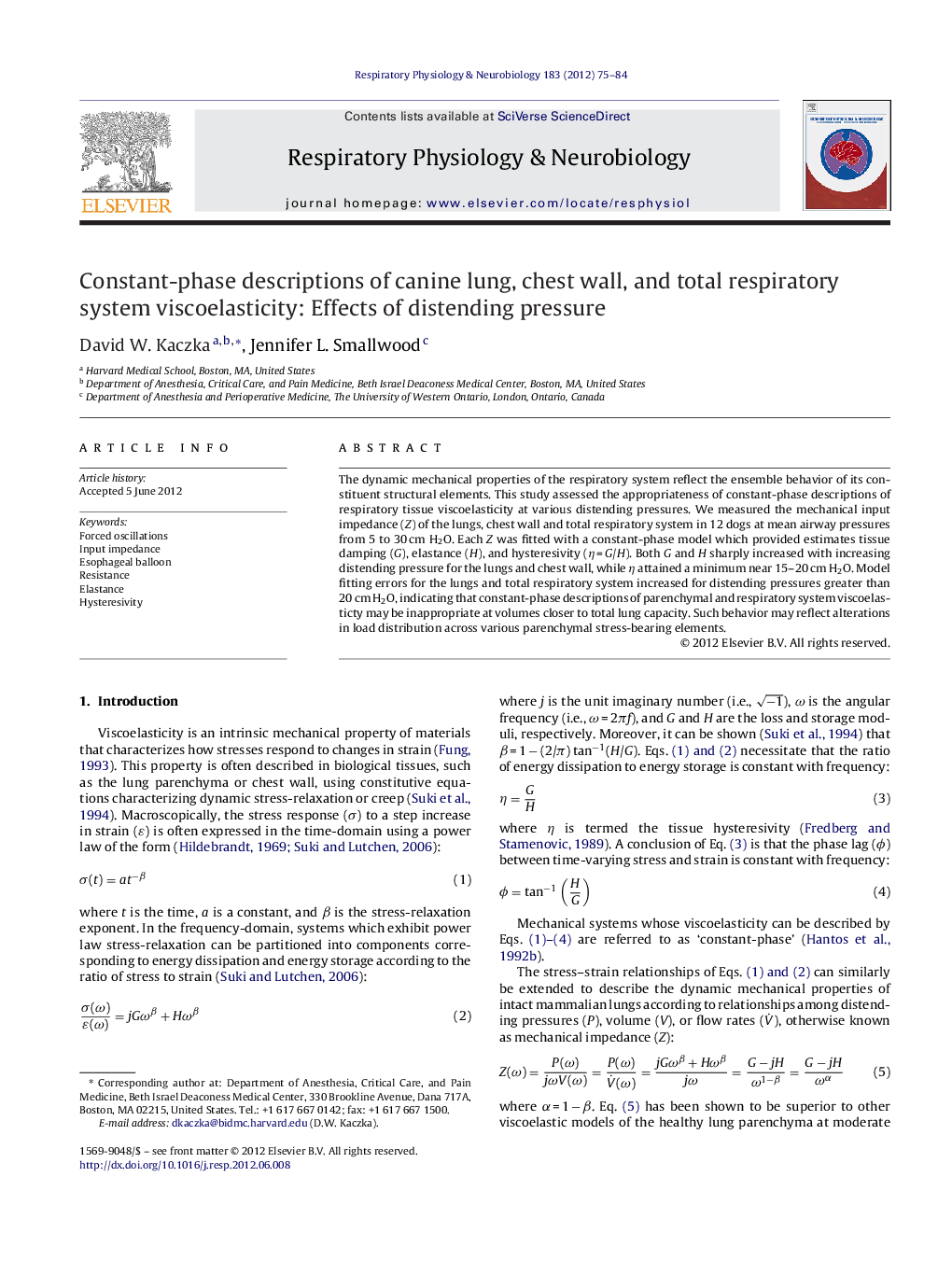| Article ID | Journal | Published Year | Pages | File Type |
|---|---|---|---|---|
| 2847243 | Respiratory Physiology & Neurobiology | 2012 | 10 Pages |
The dynamic mechanical properties of the respiratory system reflect the ensemble behavior of its constituent structural elements. This study assessed the appropriateness of constant-phase descriptions of respiratory tissue viscoelasticity at various distending pressures. We measured the mechanical input impedance (Z) of the lungs, chest wall and total respiratory system in 12 dogs at mean airway pressures from 5 to 30 cm H2O. Each Z was fitted with a constant-phase model which provided estimates tissue damping (G), elastance (H), and hysteresivity (η = G/H). Both G and H sharply increased with increasing distending pressure for the lungs and chest wall, while η attained a minimum near 15–20 cm H2O. Model fitting errors for the lungs and total respiratory system increased for distending pressures greater than 20 cm H2O, indicating that constant-phase descriptions of parenchymal and respiratory system viscoelasticty may be inappropriate at volumes closer to total lung capacity. Such behavior may reflect alterations in load distribution across various parenchymal stress-bearing elements.
► We assessed the adequacy of constant-phase descriptions of respiratory tissue viscoelasticity. ► We measured input impedance of the lungs, chest wall and total respiratory system in dogs. ► Each Z was fitted with a constant-phase model with tissue damping, elastance, and hysteresivity. ► Model fitting errors significantly increase for distending pressures greater than 20 cm H2O. ► Constant-phase descriptions of respiratory viscoelasticity may be inappropriate near total lung capacity.
